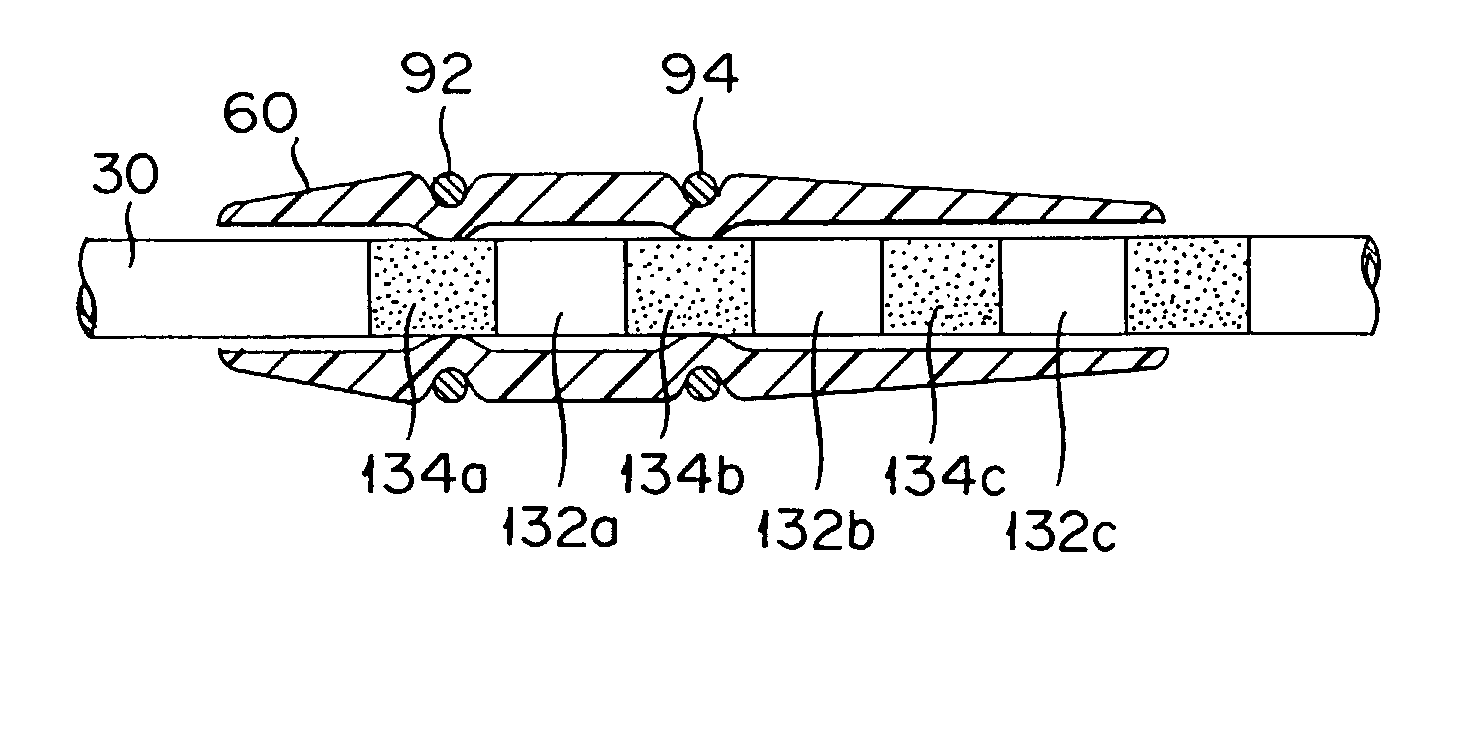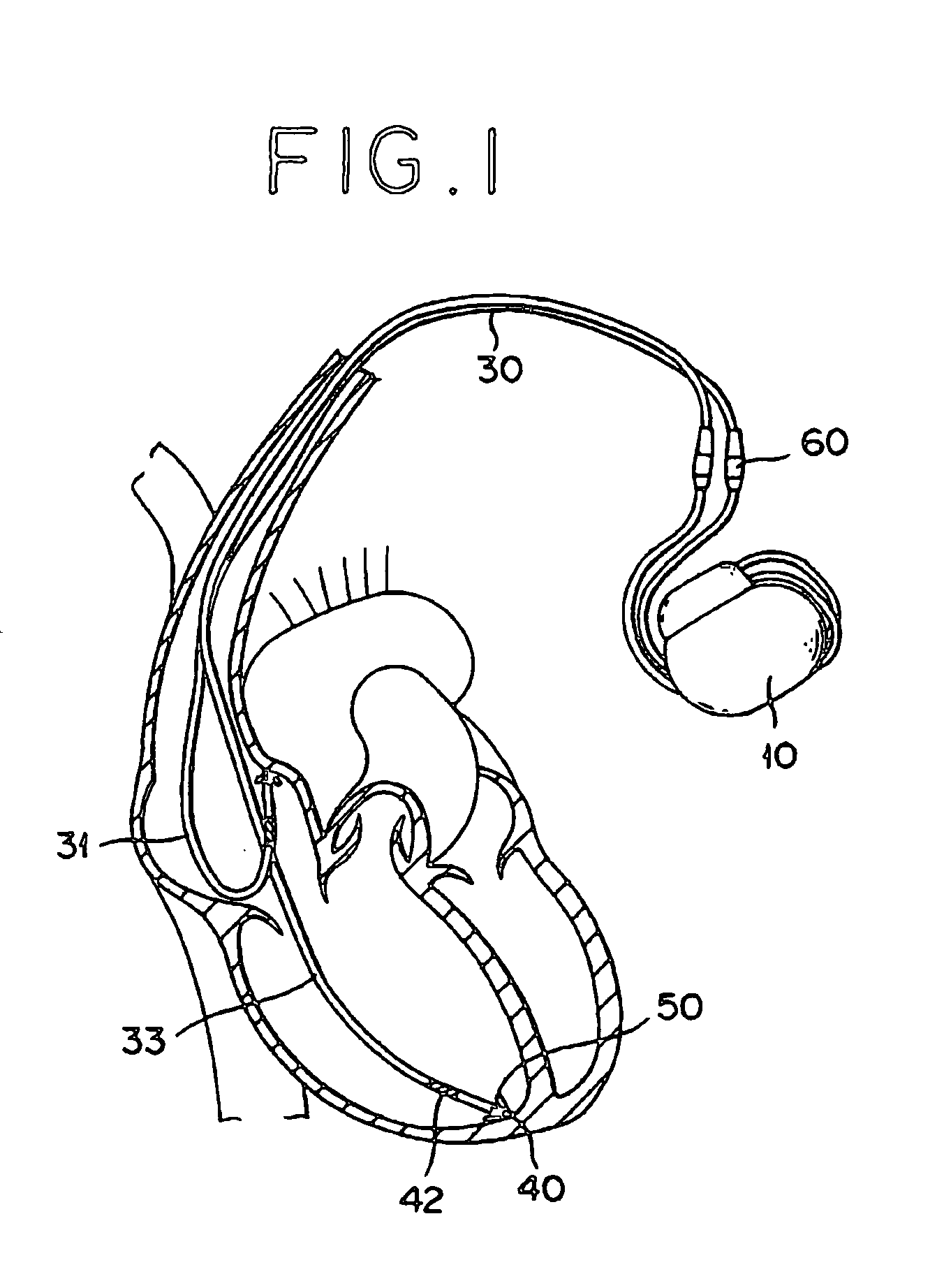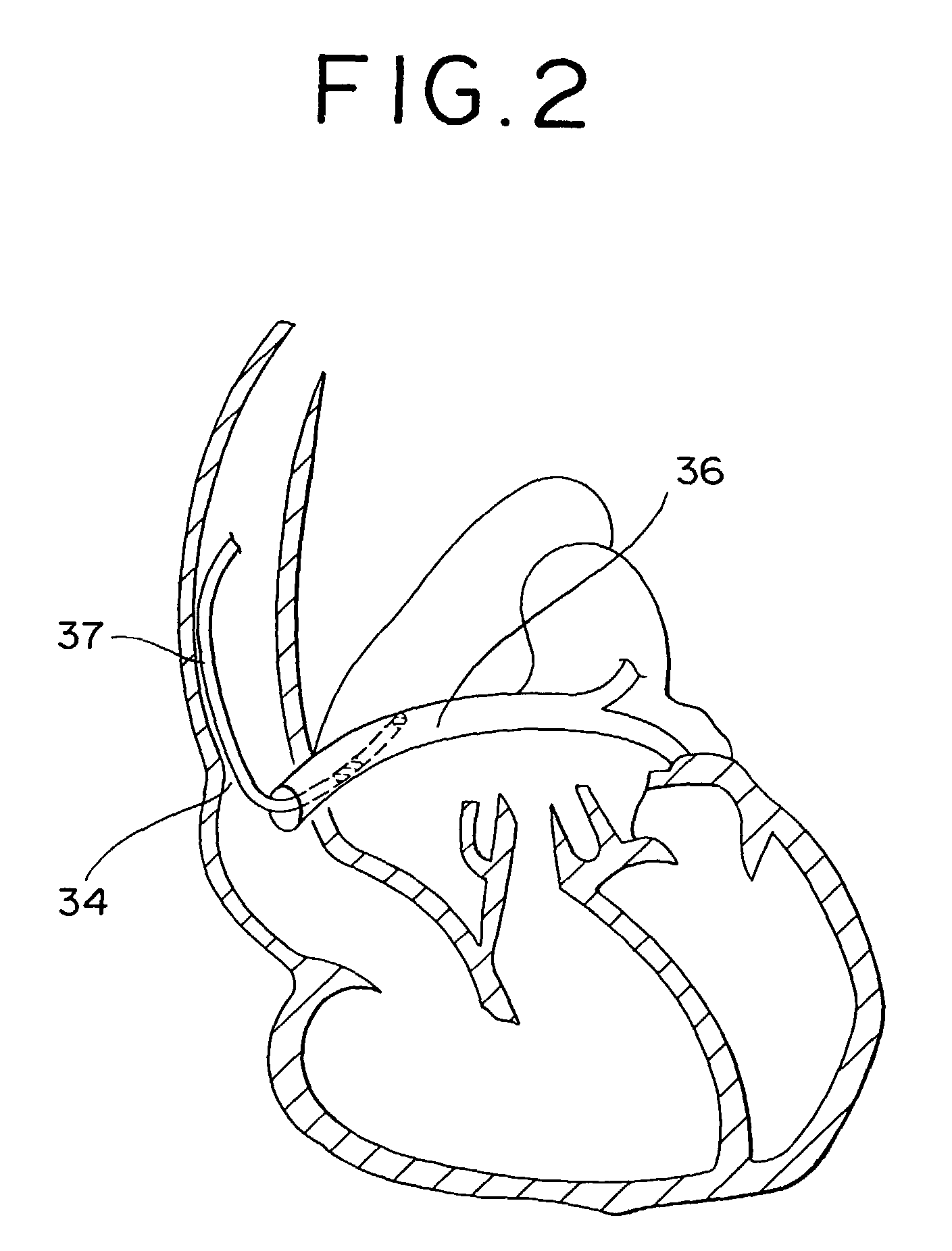Implantable electrode lead
- Summary
- Abstract
- Description
- Claims
- Application Information
AI Technical Summary
Benefits of technology
Problems solved by technology
Method used
Image
Examples
example 1
[0042]For each of a conducting part 30 provided with an insulating coat and a conducting part 30 similarly provided with an insulating coat which was further provided thereon with a lubricating coat layer, resistance against extraction was measured with a device illustrated in FIG. 9.
[0043]As shown in FIG. 9, one end of each of the conducting parts 30 was fixed to a load cell 80 and the other end thereof was inserted into a tube 84 of ETFE measuring 3.3 mm in inside diameter and 240 mm in length, curved with a radius of curvature of 88 mm over the entire length thereof which has been immersed in a water tank 86 filled with water 88. While the conducting part 30 thus lodged in the tube was extracted from the tube, the maximum resistance offered against the extraction was measured. The insulating coat was formed of silicone and the lubricating coat layer was formed of polyvinyl pyrrolidone. The test was performed up to three repetitions on each of the conducting parts 30. The results ...
example 2
[0045]A conducting part 30 provided with an insulating coat and a conducting part 30 similarly provided with an insulating coat which was further provided thereon with a lubricating coat layer were each subjected to ligation. The fixing force produced consequently was measured with a device as shown in FIG. 10.
[0046]As shown in FIG. 10, one end of each of the conducting parts 30 was fixed to a load cell 80, ligated from the outer periphery of a ligating part 92 of a suturing sleeve 60 with a force of 18N using a suture 90 (1-0 size, silk), and kept immersed in physiological saline at 37° C. for 10 days. Subsequently, the conducting part 30 and the suture 90 used for ligation were each chucked and tested for tensile strength to measure a fixing force. The insulating coat was formed of silicone and the lubricating coat layer was formed of polyvinyl pyrrolidone. The test was performed up to three repetitions on each of the samples. The results are shown in Table 2 below.
[0047]
TABLE 2Ou...
example 3
[0049]An implantable electrode lead having a total length of 520 mm and constructed as shown in FIG. 4 was manufactured. This lead was composed of a connecting means 20, a conducting part 30, a tip electrode 40, and a ring electrode 42. An insulating coat 35 for this lead was formed of silicone. This lead comprised a polyvinyl pyrrolidone coat as a lubricating coat layer 34 which extends over 200 mm in length from the ring electrode 42 toward the proximal end and a section 76 of a total length of 100 mm extending over a distance of 300 mm from the ring electrode 42 and continuing into the lubricating coat layer 34 and having regions 132 containing no lubricating coat layer and regions 134 containing a lubricating coat layer formed alternately therein. The pitch 73 of coats was set to be 4 mm and the coat width 71 was set to be 2 mm. The distance between the ligating parts 92 and 94 on the suturing sleeve 60 was set to be 4 mm.
[0050]During the ligation of the lead, the suturing sleev...
PUM
 Login to View More
Login to View More Abstract
Description
Claims
Application Information
 Login to View More
Login to View More - R&D
- Intellectual Property
- Life Sciences
- Materials
- Tech Scout
- Unparalleled Data Quality
- Higher Quality Content
- 60% Fewer Hallucinations
Browse by: Latest US Patents, China's latest patents, Technical Efficacy Thesaurus, Application Domain, Technology Topic, Popular Technical Reports.
© 2025 PatSnap. All rights reserved.Legal|Privacy policy|Modern Slavery Act Transparency Statement|Sitemap|About US| Contact US: help@patsnap.com



